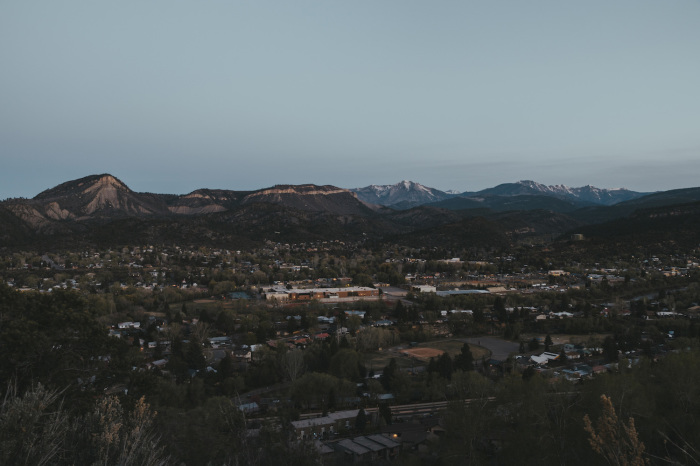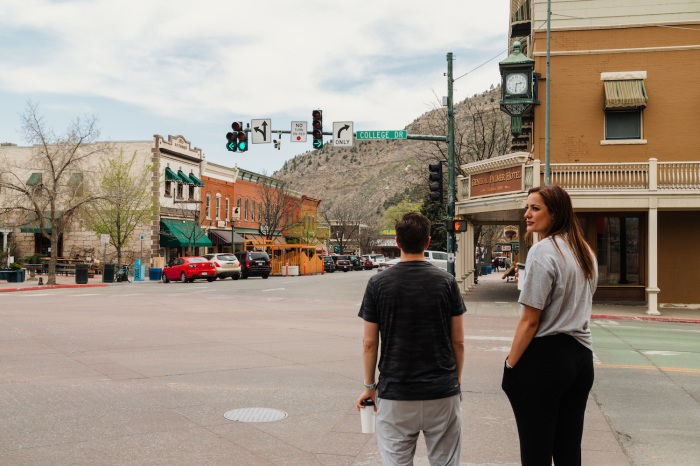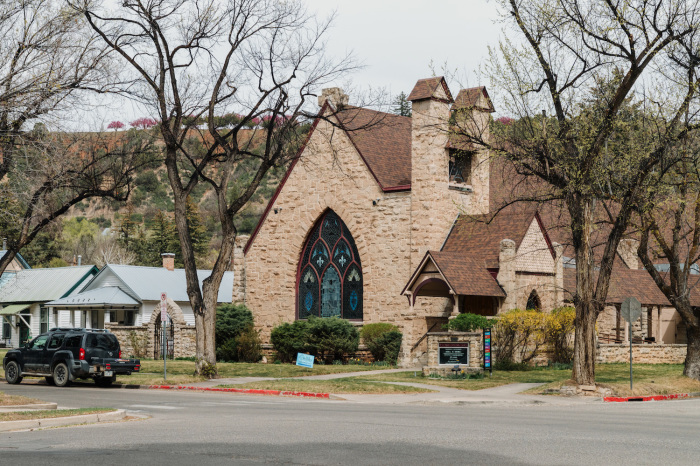Postcard from Durango, Colorado

Surrounded by the San Juan range of the Rocky Mountains at some 6,522 feet in elevation is Durango.
A relic from the days of mining and railroads, the city of just under 20,000 souls in Colorado’s isolated southwest — locals here get their TV news from neighboring New Mexico, not Denver — is noticeably different from more tourist-oriented mountain towns.
For starters, year-round shops, galleries, a considerable number of restaurants and even a couple of old-school hotels line Main Avenue, the principal street in Durango. Not far from downtown is Fort Lewis College, a public liberal arts college that evolved out of a former Indian boarding school.
One of the hotels, the Strater, sold last year for over $13 million. Listed on the National Register of Historic Places, it was built in 1887 and includes the Diamond Belle Saloon with its ragtime piano player. The family-friendly entertainment feels authentic enough to make you think it’s a scene from one of those Western movies with John Wayne. Adding to the atmosphere are the carriage and stagecoach tours from D&K Wagon Rides that start and finish out front.

The Old West theme continues a short drive away at the Bar D Chuckwagon. Here, a dinner and live show featuring cowboy music and comedy has been held nightly from Memorial Day through September since 1969.
Back downtown, the biggest draw is the Durango and Silverton Narrow Gauge Railroad.
While today focused on tourists, the railroad has continuously operated trains over 45 miles of track since its founding by Civil War General and rail baron William Jackson Palmer in 1882. Back then, it transported people, goods and silver through the rugged wilderness from the once-isolated mining town of Silverton at 9,318 feet in elevation to the smelters in Durango. The year-round service expands seasonally with multiple trains offering passengers different experiences, including an overnight stay at the landmark Grand Imperial Hotel.

Two blocks from Main Avenue along tree-lined East Third Avenue are over a hundred listed houses and churches from the silver boom that put Durango on the map. Notables include St. Mark’s Episcopal Church, an example of rustic Gothic revival, and First Presbyterian Church with its handsome Victorian porch and shingling.
As expected given Durango’s location in the San Juan Mountains and its appealing climate with 300 days of sunshine, there are also more than enough outdoor experiences — think fishing and rafting in Animas River to hiking and off-road drives — to satisfy everyone’s interests.
If you go
Consider booking the Holiday Inn & Suites Durango Central if you aren’t into historic hotels or don’t want the hassle of parking downtown.
The dining scene’s most notable eateries are Primus, Ore House and Eolus. For those considering dinner and a show at the Bar D Chuckwagon, tickets are $15 for children and $35 for adults. An alternative offered by Rimrock Outfitters combines a horseback ride with breakfast or dinner cooked right on the trail.
Railroad packages with a night at the Grand Imperial in Silverton start at $532.60 for two. Otherwise, a same-day return ticket in first-class is $194 for adults and $189 for children.
Mile to Wild Rafting & Jeep Tours is recommended for outdoor excursions. One of their Jeep tours takes you to the peak of Kennebec Pass at 12,000 feet in elevation.
Durango’s airport has daily flights to and from Denver, Dallas-Fort Worth and Phoenix on American, Frontier and United. In Denver and Salt Lake City, seven hours away by car, are the closest major airports.
Dennis Lennox writes a travel column for The Christian Post.
Dennis Lennox writes about travel, politics and religious affairs. He has been published in the Financial Times, Independent, The Detroit News, Toronto Sun and other publications. Follow @dennislennox on Twitter.





























